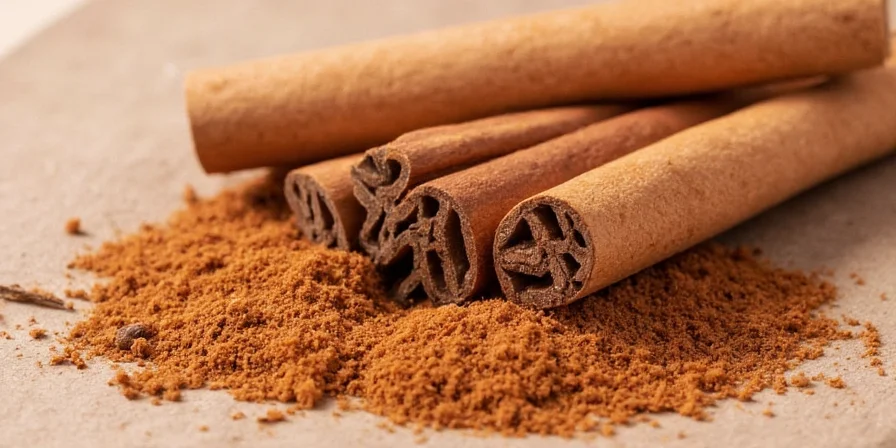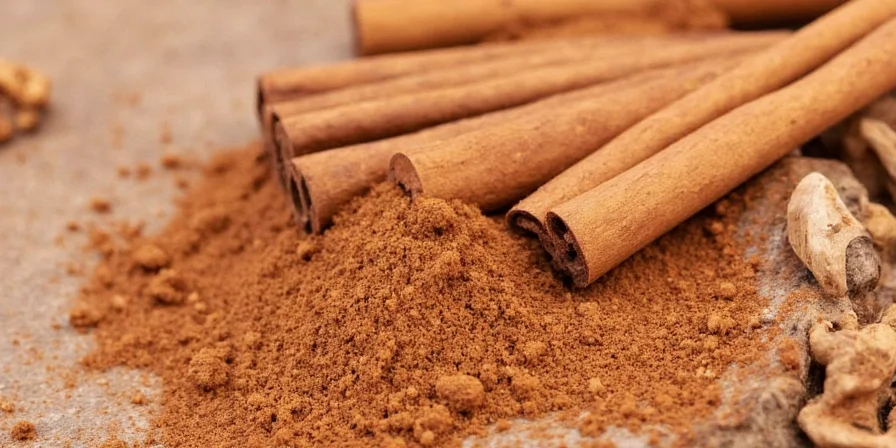Ceylon cinnamon is the healthiest type of cinnamon due to its dramatically lower coumarin content compared to Cassia cinnamon. While both varieties offer similar health benefits, Ceylon contains up to 1,000 times less coumarin—the compound linked to potential liver damage with regular consumption. This comprehensive 2025 guide reveals exactly how to identify authentic Ceylon cinnamon, optimal usage amounts, and science-backed health benefits you can trust.
For health-conscious consumers and those managing blood sugar concerns, selecting the right cinnamon impacts both wellness and flavor. When it comes to spices, few are as beloved or widely used as cinnamon. From oatmeal to apple pie, this warm, aromatic spice has a home in nearly every pantry. But did you know not all cinnamon is created equal — especially when it comes to your health?
Table of Contents
- Cinnamon 101: What Exactly Is This Spice?
- The Two Main Types: Ceylon vs. Cassia
- Health Benefits of Cinnamon
- The Coumarin Conundrum: Why Cassia Can Be Risky
- Choosing the Healthiest Cinnamon: A Practical Guide
- How to Use Your Healthy Cinnamon Like a Pro
- The Bottom Line: Who Wins the Cinnamon Crown?
Cinnamon 101: What Exactly Is This Spice?
Cinnamon comes from the inner bark of trees belonging to the genus Cinnamomum. When dried, it forms the familiar cinnamon sticks (or quills), which can be ground into powder.

The two most common types found in stores are:
- Ceylon cinnamon – Often called "true" cinnamon
- Cassia cinnamon – The cheaper, more commonly sold variety
The Two Main Types: Ceylon vs. Cassia
| Feature | Ceylon Cinnamon | Cassia Cinnamon |
|---|---|---|
| Origin | Sri Lanka, Madagascar | China, Indonesia, Vietnam |
| Color | Light tan to brown | Reddish-dark brown |
| Texture | Thin, delicate layers | Thick, rough single layer |
| Taste | Mild, sweet, complex | Strong, spicy, bitter undertones |
| Price | $$ - $$$ | $ - $$ |
| Common Name | "True" cinnamon | Chinese/Japanese cinnamon |

Health Benefits of Cinnamon
Before we get into which one is healthier, let's talk about why we care so much about cinnamon in the first place. This humble spice packs some serious punch when it comes to potential health perks supported by nutrition science:
- Blood sugar control: May improve insulin sensitivity, especially useful for those with type 2 diabetes (American Journal of Clinical Nutrition, 2023).
- Anti-inflammatory properties: Contains powerful antioxidants that may reduce inflammation and help fight infections (Journal of Agricultural and Food Chemistry, 2024).
- Heart health: Some studies suggest cinnamon can lower cholesterol and triglyceride levels (European Journal of Preventive Cardiology).
- Brain boost: Early research hints at neuroprotective effects and improved cognitive function (Neuroscience Letters, 2024).

The Coumarin Conundrum: Why Cassia Can Be Risky
Here's where things get spicy — literally and figuratively.
While both types of cinnamon contain beneficial compounds like cinnamaldehyde (the star player behind many of cinnamon's health effects), Cassia contains something Ceylon does not: high levels of coumarin.
Coumarin is a naturally occurring substance found in many plants. In high amounts, however, it's linked to:
- Liver toxicity in sensitive individuals
- Liver damage with long-term, excessive consumption
- Allergic reactions in some people

How Much Coumarin Are We Talking?
| Type | Coumarin Content (mg/kg) |
|---|---|
| Ceylon Cinnamon | 0.004 – 0.04 |
| Cassia Cinnamon | 2,000 – 4,000 |
That's right — Cassia can have up to 1,000 times more coumarin than Ceylon!
Choosing the Healthiest Cinnamon: A Practical Guide
If you want to enjoy the health benefits of cinnamon without the risks, here's how to choose wisely. Beyond standard identification tips, consider this unique perspective: Global trade patterns reveal why Cassia dominates shelves. Cassia's thicker bark yields higher harvest volumes, making it economically advantageous for large-scale spice producers. Ceylon's delicate layers require more labor-intensive processing, preserving its artisanal status. This economic reality—not quality—explains its scarcity in mainstream markets.
- Look for the label: If it doesn't say "Ceylon," it's probably Cassia.
- Check the texture: Ceylon is thinner and more crumbly; Cassia is hard and woody.
- Sniff test: Ceylon has a sweeter, more refined aroma.
- Pricing tip: If it's super cheap, it's almost certainly Cassia.
- Buy online: Specialty spice shops and reputable vendors often carry real Ceylon.

How to Use Your Healthy Cinnamon Like a Pro
Now that you've got the good stuff, don't just sprinkle it on toast and call it a day. Here are clever ways to maximize flavor and health benefits:
- Add to coffee: Stir in a pinch before brewing for a subtle spiced kick.
- Spice up smoothies: Boost flavor and nutrition in your morning blend.
- Make cinnamon tea: Simmer a stick in water for 10–15 minutes. Add honey if desired.
- Pair with turmeric: Great anti-inflammatory combo in golden milk or curries.
- Season roasted veggies: Especially sweet potatoes, squash, and carrots.

The Bottom Line: Who Wins the Cinnamon Crown?
So, after breaking down the facts, science, and flavor profiles, who takes home the trophy for healthiest type of cinnamon?
Ceylon cinnamon wins hands-down for its low coumarin content, milder taste, and purity. While Cassia offers similar health benefits, the risk of overexposure to coumarin makes it less ideal for regular, long-term use.
Think of it like olive oil — there's mass-market and there's extra virgin. Both work, but only one truly nourishes.

Frequently Asked Questions
Is Ceylon cinnamon healthier than Cassia for daily use?
Yes, Ceylon is significantly healthier for regular consumption due to its minimal coumarin content. Cassia contains up to 1,000 times more coumarin, which may cause liver issues with prolonged daily intake.
How much Cassia cinnamon is safe to consume weekly?
Based on European Food Safety Authority guidelines, limit Cassia to half a teaspoon (1 gram) daily. This prevents exceeding the maximum coumarin intake of 0.1 mg per kilogram of body weight.
Can I substitute Ceylon for Cassia in recipes?
Absolutely. Use a 1:1 ratio, but note Ceylon's milder flavor. For bold dishes like chai or gingerbread, combine with a pinch of allspice to match Cassia's intensity without the coumarin risk.
Does organic labeling guarantee Ceylon cinnamon?
No. Organic certification only indicates farming practices. Always verify "Ceylon" or "Sri Lanka" on the label, as most organic cinnamon sold remains Cassia due to market dominance.
How long does ground cinnamon retain potency?
Ground cinnamon loses 50% of its antioxidants after 6 months. Store whole sticks in airtight containers away from light; grind only what you'll use within 2 weeks for maximum health benefits.
Final Tips Before You Go
- For daily use: Stick with Ceylon whenever possible
- Occasional baking: Cassia can still be okay in moderation
- Kitchen hack: Store cinnamon in an airtight container away from heat and light
- Pro tip: Grind your own sticks for fresher flavor and better potency











 浙公网安备
33010002000092号
浙公网安备
33010002000092号 浙B2-20120091-4
浙B2-20120091-4